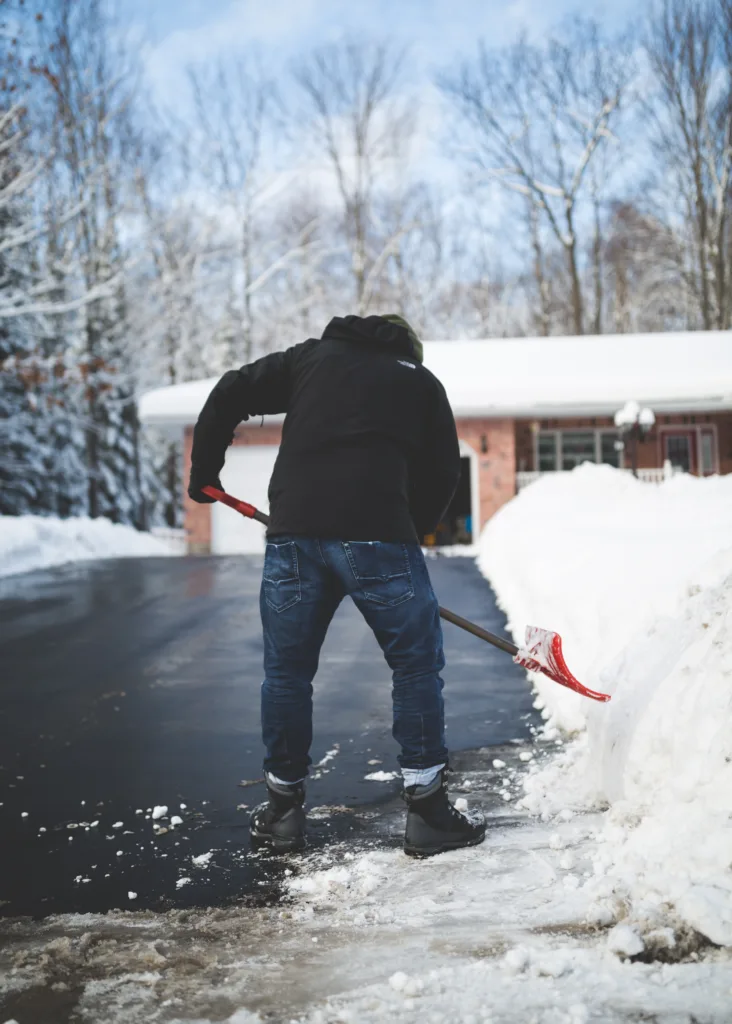Exercise is an essential component of a healthy lifestyle. It helps to maintain a healthy weight, improve cardiovascular health, and boost overall well-being. However, not all exercises are created equal. Some activities can be more beneficial than others, and it turns out shoveling snow can be a great workout.
In lab testing, it was found that snow shoveling is equivalent to vigorous physical activity like running on a treadmill. This means that for many people, shoveling snow would be at or close to their maximal fitness capacity. Furthermore, the repetitive nature of shoveling makes it a great functional aerobic exercise. It works the whole body in a very efficient way.
Apart from being a great workout, shoveling snow also has cardiovascular benefits. When you shovel snow, your heart rate increases, causing your heart to beat faster. This can help to improve cardiovascular health, and reduce the risk of heart disease. However, it is essential to note that shoveling snow can be dangerous for some people.
Every winter, hospital admissions of people experiencing chest pain or heart attacks increase after snowfalls. This is why it is important to know your limits. A Beaumont doctor recommends that people over the age of 45 should stop shoveling their driveways, as it culd lead to serious health problems. Additionally, people with pre-existing heart conditions or other health issues should also avoid shoveling snow.
If you do decide to shovel snow, it is crucial to take the necessary precautions. Make sure to dress appropriately for the weather, wear non-slip shoes, and take frequent breaks. It is also important to use proper technique when shoveling to avoid straining your back or other muscles.
Shoveling snow can be a great workout with cardiovascular benefits. However, it is not suitable for everyone, and it is crucial to take precautions and know your limits. As with any form of exercise, it is essential to listen to your body and stop if you experience any pain or discomfort.
What Exercise Is Shoveling Snow Equivalent To?
According to lab testing, shovelling snow is equivalent to vigorous physical activity, such as running on a treadmill. This level of activity can be considered as close to maximal fitness capacity for many individuals. It is important to note that every winter, hospital admissions of people experiencing chest pain or heart attacks increase after snowfalls, highlighting the strenuous nature of snow shovelling as an exercise.

Can You Lose Weight By Shoveling Snow?
You can lose weight by shoveling snow. According to the Harvard Heart Letter, shoveling snow can burn nearly 200 calories in 30 minutes of activity. This is because shoveling snow is a physical activity that requires a lot of energy and movement. By continuously shoveling snow, you can burn calories and lose weight over time. However, it is important to note that shoveling snow can also be a strenuous activity that may pose a risk of injury, particularly for individuals with pre-existing medical conditions or who are not physically fit. Therefore, it is important to take precautions and consult with a healthcare professional before engaging in this type of activity.
At What Age Should You Stop Shoveling Snow?
According to a Beaumont doctor, individuals should stop shoveling snow themselves once they reach the age of 45. This is because shoveling snow is a physically demanding task that requires a lot of strength and endurance, and as we age our bodies become less capable of handling such strenuous activity. Furthermore, shoveling snow can also pose serious health risks such as heart attacks, especialy for those with pre-existing heart conditions. Therefore, it is recommended that individuals over the age of 45 seek alternative methods of snow removal, such as hiring a professional or using a snow blower, to avoid putting their health at risk.
Is Shoveling Snow Cardio Or Strength Training?
Shoveling snow can be considered as a combination of cardio and strength training. On the one hand, shoveling snow requires the use of various muscle groups, including the arms, shoulders, back, and legs. This means that it can help to build muscular endurance and strength in these areas. On the other hand, shoveling snow also raises the heart rate and gets the blood pumping, which means that it can also provde a cardiovascular workout. In fact, the repetitive nature of shoveling snow makes it an efficient aerobic exercise that works the whole body. Therefore, shoveling snow can be seen as a form of functional training that combines strength and cardio elements.

Conclusion
Exercise is an essential component of a healthy lifestyle. It not only helps us maintain physical fitness but also promotes mental well-being. Engaging in regular physical activity can help reduce the risk of various chronic diseases, including diabetes, heart disease, and obesity. It is important to note that exercise does not have to be intense or time-consuming to be effective. Even small amounts of physical activity can have significant health benefits. Lastly, it is crucial to consult with a doctor before starting any new exercise routine, especialy if you have pre-existing health conditions. So, let’s make exercise a part of our daily routine and reap its numerous benefits for a healthier, happier life.
